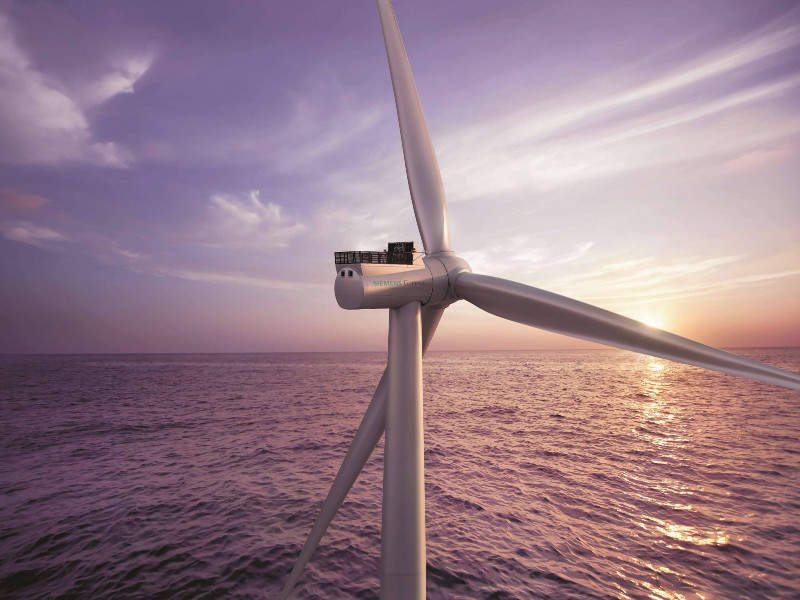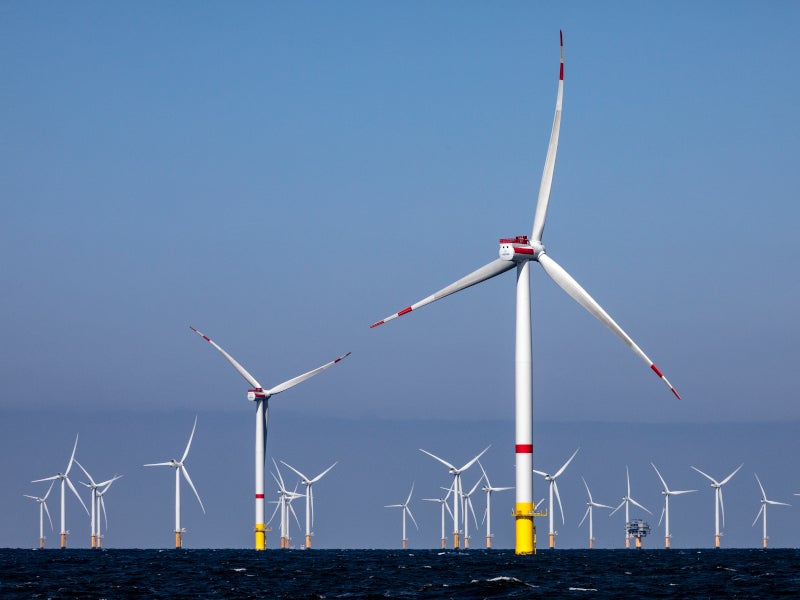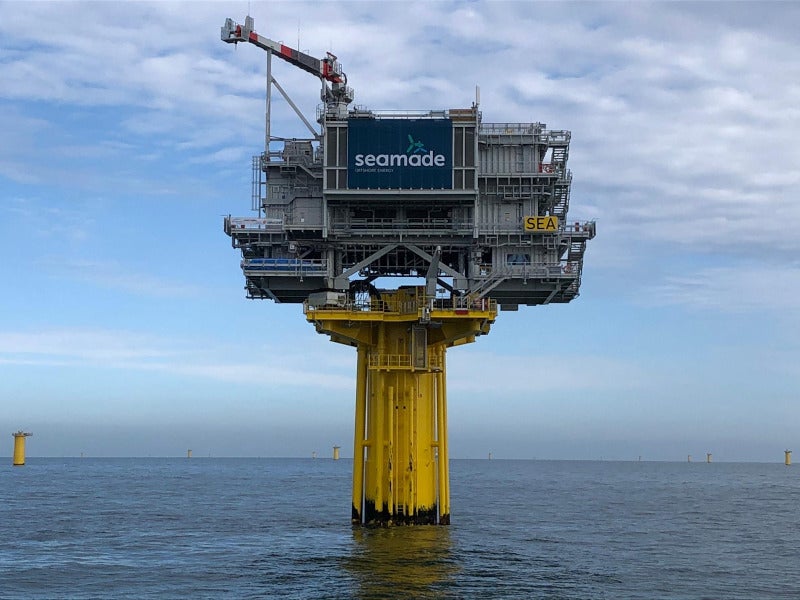The SeaMade offshore wind farm is a 487MW wind power project developed in the Belgian section of the North Sea. It is the biggest offshore wind farm in Belgium.
The €1.3bn ($1.47bn) wind farm is owned and operated by SeaMade, a joint venture of Otary (70%), Engie Electrabel (17.5%), and Eneco (12.5%).
SeaMade achieved financial closure for the project in December 2018 and started offshore construction in September 2019.
The offshore wind farm was built and delivered during the Covid-19 pandemic, with the last turbine installed in November 2020. While the wind farm commenced operations by the end of 2020, it was officially inaugurated by the Belgian Prime Minister in October 2021.
The SeaMade offshore wind farm is expected to generate up to 1.8 terawatt-hours (TWh) of renewable electricity a year. It will power up to 500,000 Belgian households and offset 700,000t of carbon dioxide (CO2) emissions a year.
Location
The SeaMade offshore wind project integrates two sites known as Mermaid and Seastar in the Belgian exclusive economic zone (EEZ).
The Mermaid site is located approximately 50km from the Belgian coast and hosts 28 turbines with a total capacity of 235MW. Located approximately 40km away from the coast, the Seastar site accommodates 30 turbines with a total capacity of 252MW.
The SeaMade windfarm is operated from Otary’s logistics hub located in the port of Ostend.
SeaMade wind farm make-up
The SeaMade offshore windfarm features 58 Siemens Gamesa Renewable Energy (SGRE) SG 8.0-167 DD wind turbines.
Fitted with a 167m diameter rotor and 81.5m-long blades, each SG 8.0-167 DD wind turbine has a swept area of 21,900m².
Each turbine weighs approximately 465t and features variable speed system with pitch-regulation mechanism. The hub height of the turbines is 109m.
Transmission from SeaMade offshore wind farm
The electricity generated by the turbines is transmitted to substations located at Seastar and Mermaid sites through inter-array cables.
The two offshore substations step up the voltage from 33kV to 220kV. The 220-245kV submarine high-voltage cables then transmit the electricity from the substations to ELIA’s Modular Offshore Grid (MOG) located 40km off the coast of Zeebrugge.
The submarine cables have a combined length of 28km and a diameter of 247mm, and weigh approximately 96.4kg per running meter.
The MOG has a capacity of 1,030MW and receives the energy produced from Rentel, SeaMade and Northwester 2 wind farms in the Belgian North Sea.
Power offtake from the SeaMade wind farm
Eneco signed a power purchase agreement (PPA) to buy all the energy generated by the SeaMade wind farm, in December 2018.
Financing
The SeaMade project was funded by a consortium of 14 commercial banks as well as the Danish export credit agency (EKF).
KfW IPEX-Bank signed an agreement for a €160m ($181m) debt facility, while European Investment Bank (EIB) committed to offer a loan of €250m ($283m) for the project.
Contractors involved in SeaMade offshore wind farm
SGRE supplied 58 SG 8.0-167 DD offshore wind turbines for the SeaMade offshore wind power project under a contract awarded in December 2018. The order also included a 17-year long-term service agreement. A consortium of ENGIE Fabricom, Tractebel, Smulders, and GeoSea was awarded a contract for the engineering, procurement, construction and installation (EPCI) as well as transport and commissioning of the substations at the Seastar and Mermaid sites.
A consortium of DEME Offshore and Hellenic Cables was awarded a contract in November 2018 to design, supply, install and commission the submarine high-voltage export cables to connect the wind farm to the Belgian grid. The cables were produced by Hellenic, while installation was performed by DEME using its cable installation vessel Living Stone.
DEME was also responsible for the EPCI of the turbine and substation foundations, and 33kV inter-array cables, apart from installing the turbines and two offshore substations of the project.
JDR Cable Systems, a cable manufacturer based in the UK, designed and supplied the inter-array cable for the project.
Gulliver, a heavy lift vessel operated by DEME’s subsidiary Scaldis, was used to install the offshore substations, while DEME’s offshore installation vessel Apollo was deployed to execute the turbine installation.
DEME utilised its offshore installation vessel Innovation to install the foundations for turbines as well as substations of the offshore wind farm.





